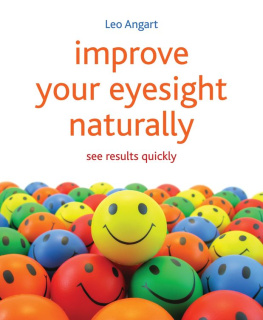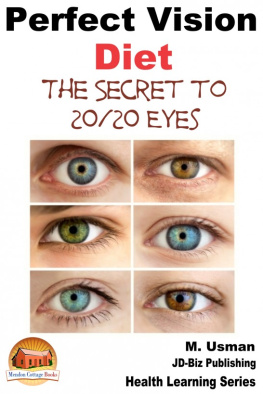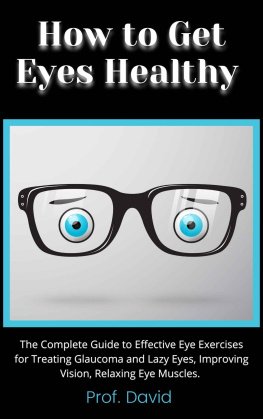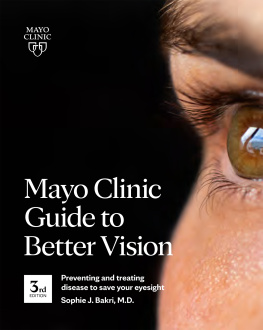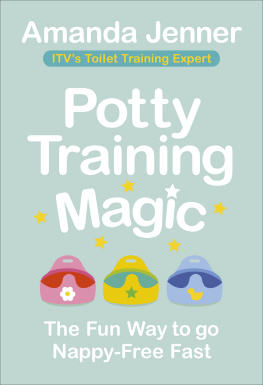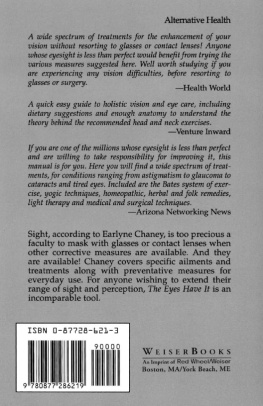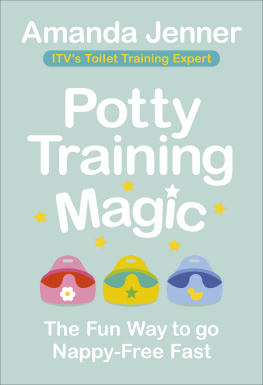Leo Angart - Magic Eyes: Vision Training for Children
Here you can read online Leo Angart - Magic Eyes: Vision Training for Children full text of the book (entire story) in english for free. Download pdf and epub, get meaning, cover and reviews about this ebook. year: 2015, publisher: Crown House Publishing, genre: Children. Description of the work, (preface) as well as reviews are available. Best literature library LitArk.com created for fans of good reading and offers a wide selection of genres:
Romance novel
Science fiction
Adventure
Detective
Science
History
Home and family
Prose
Art
Politics
Computer
Non-fiction
Religion
Business
Children
Humor
Choose a favorite category and find really read worthwhile books. Enjoy immersion in the world of imagination, feel the emotions of the characters or learn something new for yourself, make an fascinating discovery.
- Book:Magic Eyes: Vision Training for Children
- Author:
- Publisher:Crown House Publishing
- Genre:
- Year:2015
- Rating:5 / 5
- Favourites:Add to favourites
- Your mark:
- 100
- 1
- 2
- 3
- 4
- 5
Magic Eyes: Vision Training for Children: summary, description and annotation
We offer to read an annotation, description, summary or preface (depends on what the author of the book "Magic Eyes: Vision Training for Children" wrote himself). If you haven't found the necessary information about the book — write in the comments, we will try to find it.
Magic Eyes: Vision Training for Children — read online for free the complete book (whole text) full work
Below is the text of the book, divided by pages. System saving the place of the last page read, allows you to conveniently read the book "Magic Eyes: Vision Training for Children" online for free, without having to search again every time where you left off. Put a bookmark, and you can go to the page where you finished reading at any time.
Font size:
Interval:
Bookmark:
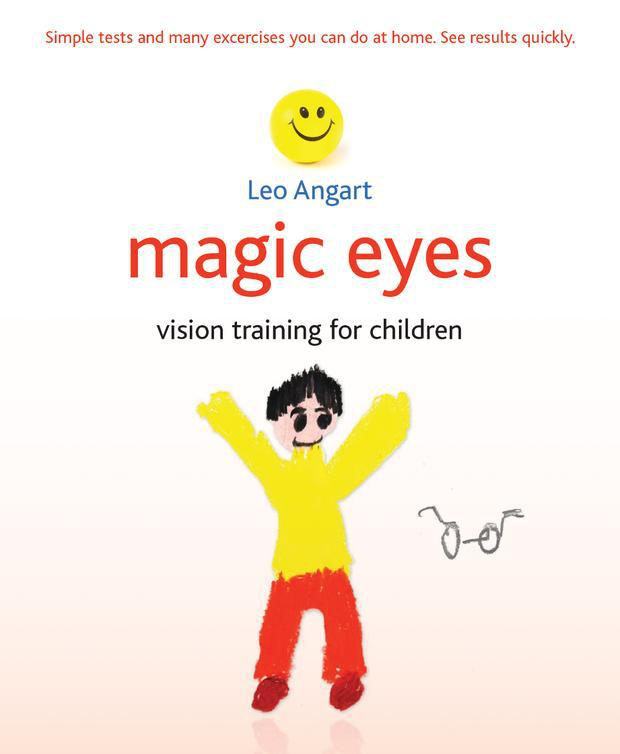

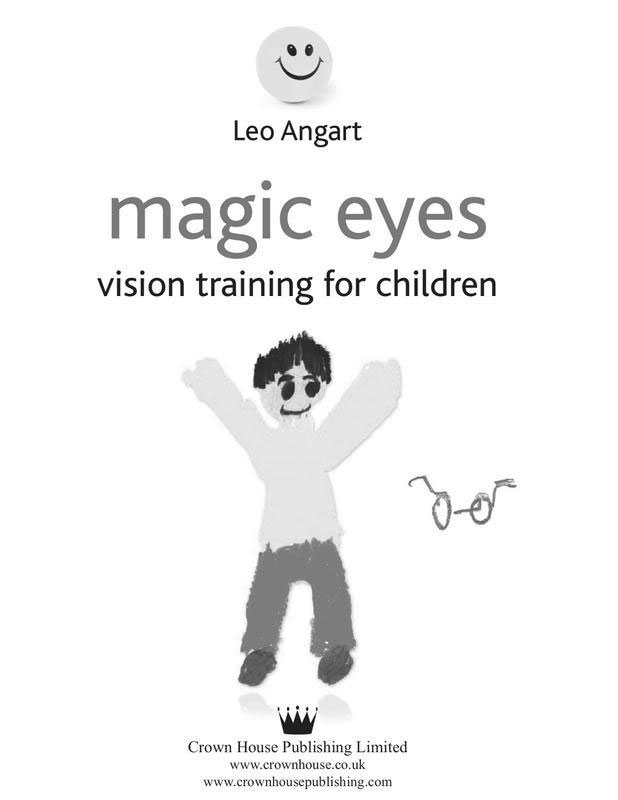

First I wish to thank the pioneers of vision training. Most of all William H. Bates, M.D., who in the early 1900s realized that vision problems are functional and can therefore be improved with exercises. Another pioneer is Arthur M. Skeffington, M.D. who in 1928 co-founded the Optometric Extension Program. Skeffington believed that vision is a function of many parts including how we perceive whats seen.
Without the achievements of the many kids in my workshops this book would not be possible. What works has emerged over 20 years of play with children in Magic Eyes workshops around the world.
Long ago I realized that many people had suffered vision problems that could, in most cases, easily have been corrected when they were children. For example, a man in his sixties told me that he could only read one word at a time. In the workshop for adults we discovered that his eyes were focusing 15 cm above the book he was trying to read. With the eye co-ordination exercise described in this book he was able to read again naturally. He told me that he wished we had met 50 years earlier. My dream is that all children will benefit from the tests and exercises in this book and grow up with Magic Eyes.
I also want to thank the many people who helped make this book possible. Eva Maria Spitzer who researched and checked everything, thank you Eva. Gken Eke who created the cute cartoons that illustrate this book. Wolfgang Gillessen for his support with all my books.
Finally I also want to thank the team at Crown House Publishing for bringing this book to you.
Leo Angart


Magic Eyes and the eyesight of children are topics very close to my heart. For more than 18 years I have worked extensively with children all over the world. My primary work is the restoration of childrens eyesight by natural means that is, without glasses, lenses, surgery or expensive therapy sessions.
Early on, I realized that I personally cannot restore someone elses eyesight for them. It is something every individual has to do for themselves. However, with children it is actually easier, for a number of reasons. Primarily, children are already at a developmental stage where their bodies, minds and eyesight are in the process of change. If training is done in a simple way, then its purpose is simply the restoration of the natural path of development.
The first stage is to remove, or counteract, the cause of any visual problem. However, before you can embark on this, it is important to have a good understanding of the childs condition. For instance, in order to be able to help their child, parents should be well-informed about the main causes of near-sight and the way that poor eye co-ordination can affect learning in a dysfunctional way.
In my travels I have met many wonderful kids and young people, but I have often been saddened when they present problems that could have been detected and corrected early on. For example, in one of my workshops, a young man realized why he had never been able to read for more than 30 minutes before it became too painful to carry on. He discovered that his point of convergence was an arms length in front of him. No wonder attempting to read anything closer than that was very stressful! After this situation was redressed, he exclaimed, with joy in his voice, Now I can read a novel for pleasure! His problem should have been detected in kindergarten or, at the very latest, in primary school; not 20 years later in my workshop.
Most professional eye-care practitioners have a different view of vision and the way that the eyes work. Their training usually does not include the notion that you can rehabilitate the visual system as easily as other systems in the body. However, in more recent years the concept of brain plasticity has become more popular. This modality takes for granted the ability of the brain to relearn and postulates that it is always taking in new information and adapting to changing environments.
This book is written as an attempt to help parents get involved in improving their childrens eyesight. I believe in the power of parents to make things happen. I have described various visual phenomena, as well as ways to detect them. And, most importantly, I have incorporated some simple exercises that parents can do with their child at home. I have also included references to scientific studies in order to broaden parents understanding.
It is my hope that mothers and fathers will use the information in this book to check whether their children have mastered the necessary visual skills for effective learning. If not, then they can initiate the exercises themselves and in most cases it will make a big difference to their childrens eyesight. Of course, professional help may be needed as well. If this is necessary, then parents will be much more knowledgeable about their childs condition and the various treatment options available.
Vision Training is not rocket science. It is based on simple common-sense principles. Children are eager learners and will take to these exercises like ducks to water. My approach, as outlined in this book, differs from most optometric vision training which employs optics and various pieces of equipment. This generally involves regular sessions over several months. My approach goes much further and treats many more conditions, including myopia, hyperopia, astigmatism, amblyopia, eye co-ordination and strabismus.
I like to take advantage of parental love! This training is something that parents and children can do together. In this setting, in the comfort of the family home, parents can keep increasing the number of exercises and thus get results fast. The brain learns very quickly. It takes only a few seconds to register a phobia but much longer to let go of it.
The physical element of the visual system is operated by muscles, so visual training resembles any other skill training. The more you practice, the better you perform. With children, the key is to keep them motivated by making it fun and exciting. Thankfully, kids usually get excited by their own progress and go for it full force.
This book is not an attempt to minimize or circumvent professional practices. There are limits to what parents can do on their own. The real purpose is to raise awareness about these issues and help to find solutions for affected children before they become labeled as deficient.
It is my dream that one day there will be dedicated Vision Training professionals with an eclectic approach who will take the best bits that work from all the varied disciplines available. All too often progress is limited or stalled because of commercial interests. I happen to think that helping a child to reach their full potential is priceless. What an achievement it can be to help an 8-year-old gain control of the way his eyes move, so he can read or play basketball. This will make a huge difference to the rest of this boys life. And, in the end, that is what makes life worthwhile.
Font size:
Interval:
Bookmark:
Similar books «Magic Eyes: Vision Training for Children»
Look at similar books to Magic Eyes: Vision Training for Children. We have selected literature similar in name and meaning in the hope of providing readers with more options to find new, interesting, not yet read works.
Discussion, reviews of the book Magic Eyes: Vision Training for Children and just readers' own opinions. Leave your comments, write what you think about the work, its meaning or the main characters. Specify what exactly you liked and what you didn't like, and why you think so.


